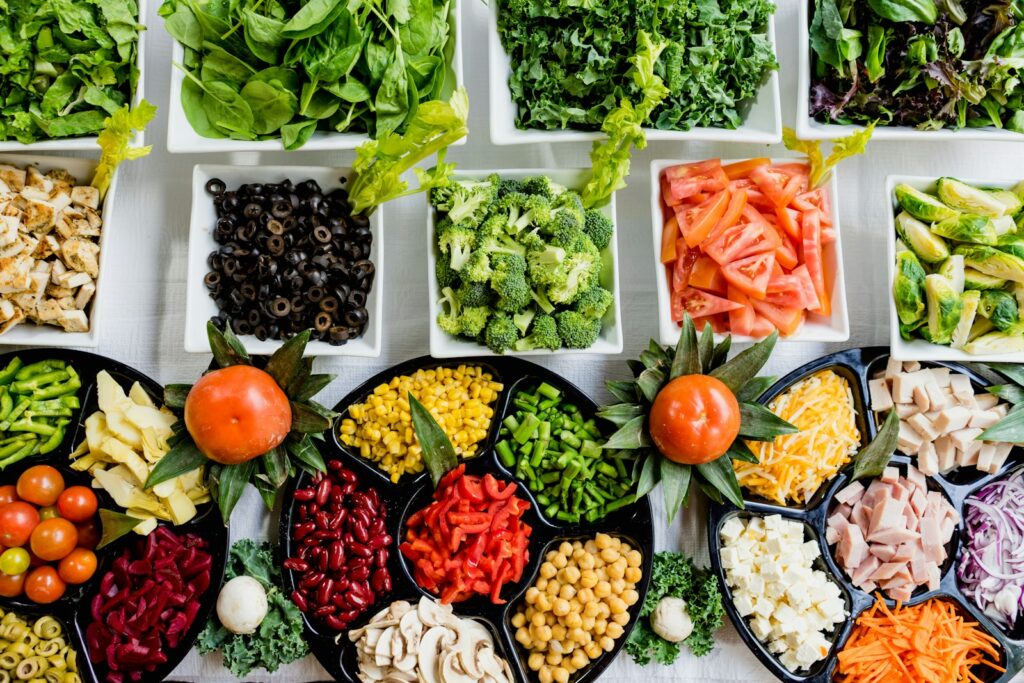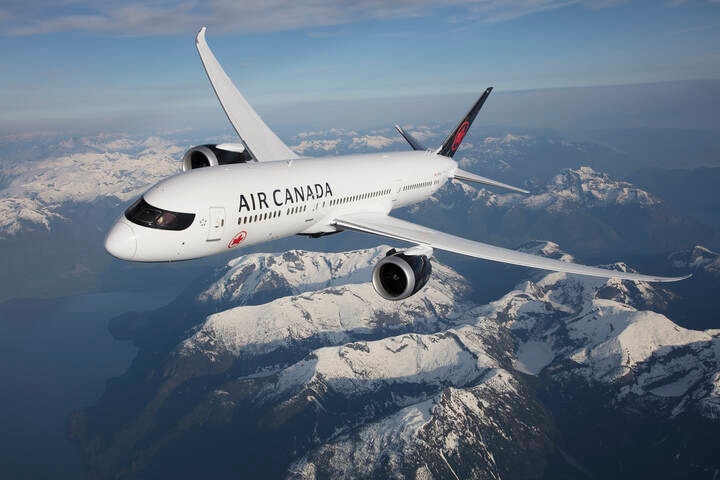
Air travel, for all its convenience and wonder, presents unique challenges to our bodies. The cabin environment, with its pressure changes and low humidity, can turn a seemingly innocuous meal or drink into a source of significant discomfort. For those who spend their lives in the skies, like airline pilots, understanding these physiological responses is not just a matter of comfort but of professional well-being and peak performance.
Expert insights are invaluable when it comes to navigating the culinary landscape of air travel. Paul Janowicz, a First Officer, A320, for Delta Airlines, along with various nutritionists and dietitians mentioned in expert discussions, offers a candid look into the foods and drinks that are best left on the ground. Their recommendations aren’t merely suggestions; they are informed strategies designed to ensure a smoother, healthier, and more enjoyable journey for everyone on board, from the cockpit to the last row.
This article, guided by these insider perspectives, will unveil the top food and drink culprits that can derail your in-flight experience. We will explore how specific choices can lead to dehydration, bloating, digestive distress, and even impact your alertness and overall comfort. By understanding the ‘why’ behind these avoidance lists, travelers can make informed decisions that transform their time in the air.

1. **Alcohol**
The allure of a complimentary alcoholic beverage or a pre-flight drink at the airport bar is undeniably tempting for many travelers, whether to soothe pre-flight jitters or kick-start a vacation. However, according to First Officer Paul Janowicz, alcohol is a prime candidate for the in-flight no-go list. Its effects are significantly amplified at altitude, creating a situation where a single drink can feel like several.
Janowicz explicitly states, “Alcohol can dehydrate you and make you feel groggy and tired after the flight.” This dehydration is particularly problematic in the already dry cabin environment, where humidity levels can drop significantly, often as low as 10-20 percent compared to sea level. Furthermore, due to the pressure changes within the cabin, “a person will get intoxicated faster drinking in-flight than on the ground,” making even a modest amount feel like an overindulgence by the time you land. The potential for a “hungover” feeling upon arrival is a strong disincentive for pilots who need to remain sharp and rested.
Beyond dehydration and quicker intoxication, other experts reinforce these warnings. Registered dietitian Fiorella DiCarlo points out that alcohol on planes can “lead to not only dehydration but low blood oxygen levels and increased heart rates, even for healthy individuals and definitely for those with heart conditions.” These combined physiological stresses can severely impact sleep quality, exacerbate gastrointestinal issues like constipation, and even prolong jet lag, turning what was intended as a relaxing start into a difficult recovery period.
The Aerospace Medical Association further highlights that flying itself is a dehydrating experience, and adding alcohol layers an additional risk, particularly regarding blood clots in high-risk individuals on flights longer than four hours. Therefore, while tempting, abstaining from alcohol in the air is a crucial step towards maintaining optimal health and comfort, echoing the strict discipline pilots must maintain for their duties. The impact on sleep quality and the potential for increased anxiety, especially for nervous flyers, further solidify alcohol’s place on this list.
Read more about: Your Retirement Nest Egg: Discover the 41 States (and D.C.) That Won’t Tax Your Social Security Benefits
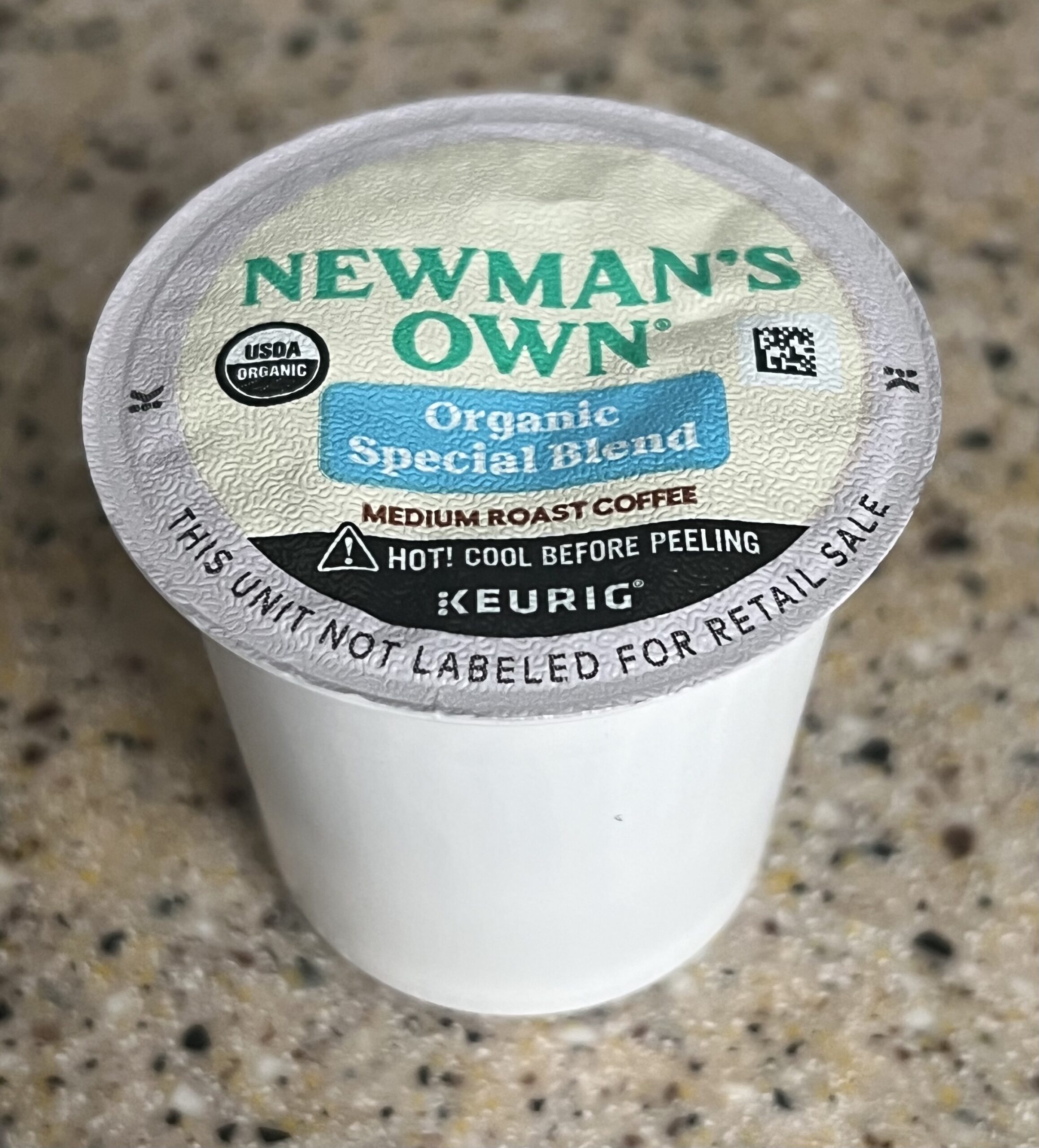
2. **Coffee**
For many, an early morning flight necessitates a strong cup of coffee, a vital ritual to jumpstart the day or to combat the grogginess of time zone shifts. Yet, First Officer Paul Janowicz unequivocally advises against in-flight coffee consumption, placing it firmly among the top foods and drinks to avoid. His reasoning points to both physiological effects and practical concerns about beverage quality.
“While it may be nice for those early morning flights, the caffeine in coffee will dehydrate you in an already dehydrating cabin environment,” Janowicz warns. The dry air in the cabin already strips moisture from the body through breathing and skin, and coffee’s diuretic properties accelerate this process. This can leave passengers feeling parched, tired, and unwell, undermining the very reason many reach for caffeine. A 2017 study even found that higher caffeine doses can act like a diuretic, leading to fluid, sodium, and potassium loss, which can cause headaches or muscle cramps.
Beyond dehydration, there’s a less-than-appetizing secret shared among food safety experts and flight crews: the source of the water. Multiple sources, including Janowicz himself and other flight crews, have “warned again and again that the tank sources for plane water used in coffee and tea can be surprisingly gross.” Hope Barkoukis, chair of the department of nutrition at Case Western Reserve University, states, “Numerous sources have documented that water on planes comes from their tanks, and these are notoriously not going to get awards for being germ-free environments.” She advises to “avoid water or ice from planes, including if it looks like they are using a pitcher.”
The Aircraft Drinking Water Rule of 2009, which mandates E. coli inspections only every five years, leaves significant room for concern, as illustrated by a 2015 study in the International Journal of Environmental Research and Public Health, finding disease-causing bacteria in plane water. Therefore, avoiding airplane coffee (and tea) is not just about hydration; it’s a proactive step to steer clear of potentially unsanitary conditions. Furthermore, coffee can stimulate the colon, leading to an increased need for urination and bowel movements, which can be highly inconvenient in the confines of an airplane lavatory, especially from a window seat. For nervous flyers, coffee’s caffeine content can also exacerbate anxiety, jitteriness, and stomach upset, turning a potentially stressful journey into a truly uncomfortable one.
Read more about: Why Your Grocery Bill Stays Stubbornly High: An In-Depth Look at Sticky Inflation
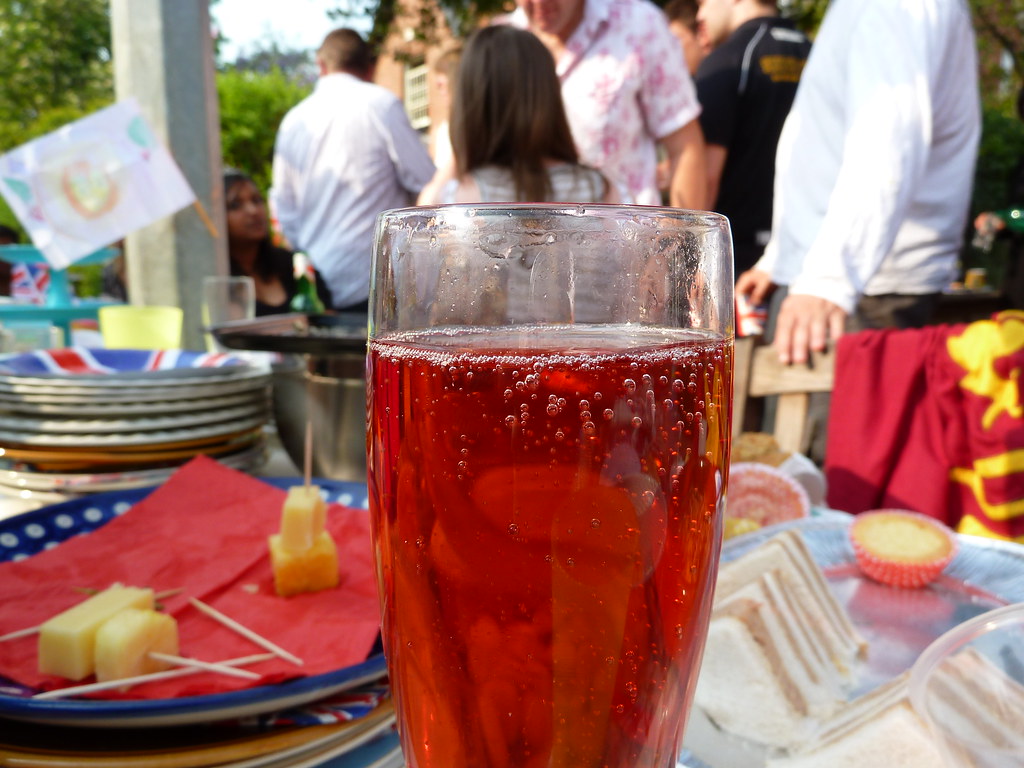
3. **Carbonated Drinks**
While many health guidelines already suggest limiting sugary sodas, the advice from pilots extends to all carbonated beverages when flying. First Officer Janowicz includes diet soda and even seltzer on his “no-fly list” due to their direct impact on in-flight comfort. The reason is simple and rooted in the physics of cabin pressure: gas.
Janowicz explains, “The carbonation can cause gas and bloating, especially if drinking while the plane is climbing or descending with the pressure changes that occur in the cabin.” As the plane ascends and descends, the external pressure changes, causing gases within the body to expand. Introducing additional gas through carbonated drinks can significantly magnify this effect, leading to uncomfortable bloating, cramping, and excessive flatulence.
Nutrition experts like holistic nutritionist Amber Attell and senior clinical dietitian Dana Hunnes concur, emphasizing that carbonated beverages contribute to bloating and discomfort at high altitudes. Hunnes notes that “the lower pressure in an airplane can make you feel bloated to begin with, and carbonated beverages can sometimes expand that ‘gas’ pressure in your belly.” For individuals already prone to digestive distress, this can become a particularly arduous experience.
The Aerospace Medical Association further reveals that the change in cabin pressure can cause gas in your intestines to expand up to 25%. This expansion, when coupled with the gas from carbonated drinks, can increase pressure on the lungs, potentially compromising breathing, especially for individuals with lung disorders. Therefore, passing on those bubbly beverages in favor of plain bottled water is a simple yet effective strategy for a more comfortable journey, even if it means a few extra trips to the lavatory.
Read more about: Unpacking the Power: How Celebrity Endorsements Shape Your Everyday Purchases
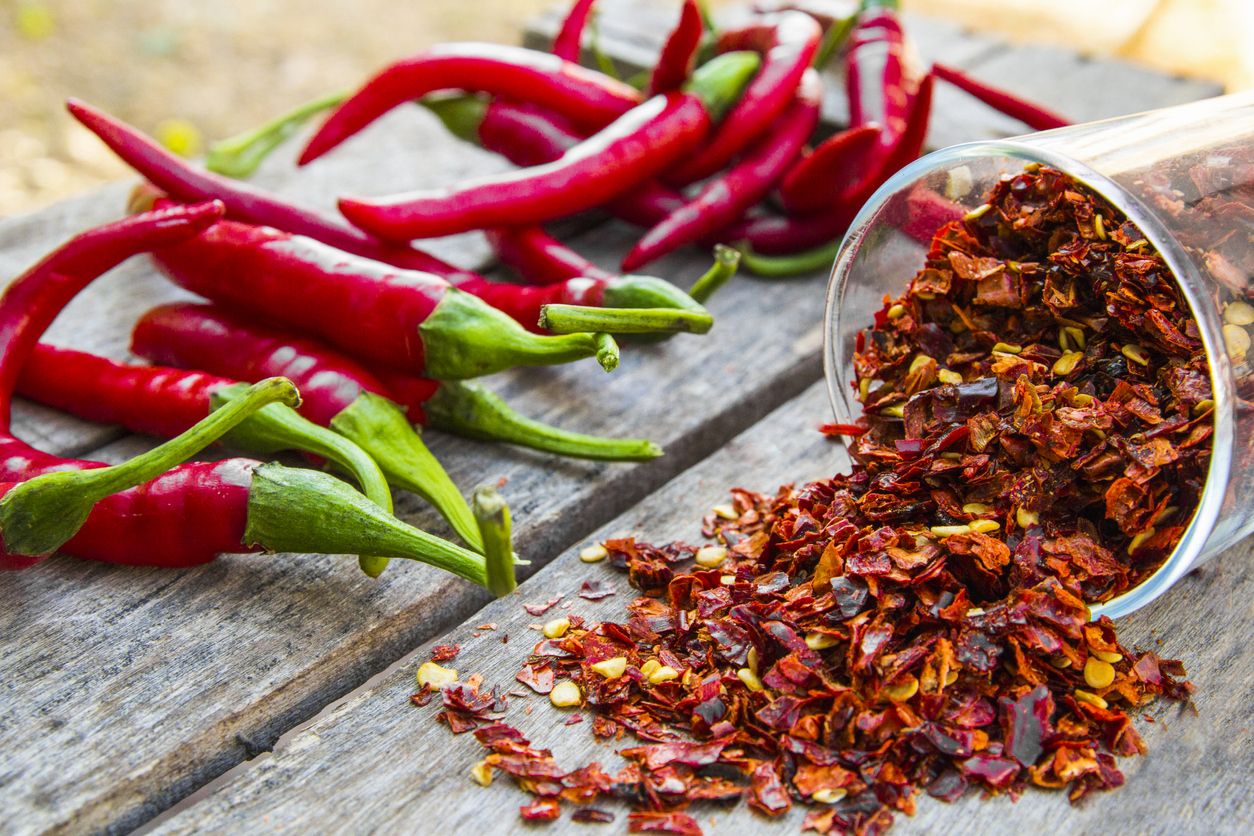
4. **Spicy Foods**
For aficionados of fiery flavors, packing hot sauce or opting for a spicy meal before a flight might seem like a good idea to perk up dull airport fare or bland in-flight offerings. However, First Officer Paul Janowicz strongly advises against it, citing a very practical reason: stomach discomfort. This recommendation applies not only to snacks brought onboard but also to meals consumed just before takeoff.
Janowicz explicitly shares, “Generally our menus onboard are very mild, but I would not pack any snacks that might have spice involved as it may cause stomach discomfort in-flight.” The digestive system, already under mild stress from the cabin environment and pressure changes, can react unfavorably to the intensity of spicy ingredients. This can manifest as heartburn, indigestion, or more generalized stomach upset, which is the last thing anyone wants to experience at 30,000 feet.
The confined space and limited mobility on an airplane mean that any digestive distress is significantly amplified. “Fiery digestion en route” is a scenario best avoided, as it can make a long flight feel even longer and more uncomfortable. The ability to move around, stretch, or access a lavatory conveniently is often restricted, making symptom management challenging, especially when you are stuck in your seat due to turbulence.
Even if you typically handle spicy foods well on the ground, the combination of altitude, pressure changes, and immobility can alter your body’s response. Therefore, adopting a milder approach to your culinary choices before and during a flight is a sensible precaution. Opting for less adventurous, more easily digestible fare can make a considerable difference in maintaining comfort and preventing unnecessary discomfort throughout your journey.
Read more about: From Hidden Gems to Hipster Hangouts: 11 Nostalgic Foods Staging a Delicious Comeback
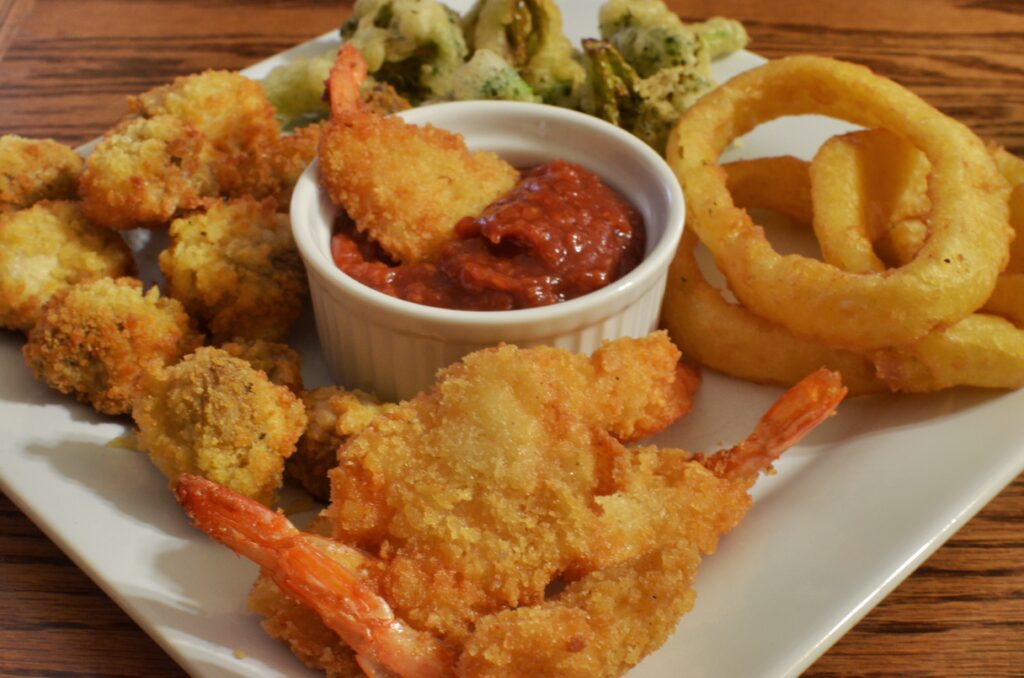
5. **Fried/Greasy Foods**
The convenience of grabbing a quick, often fried, meal at the airport can be incredibly tempting when rushing to a gate or facing a long layover. However, this category of food — including chicken fingers, fries, and onion rings — is firmly on the list of items to avoid before and during a flight, according to First Officer Paul Janowicz and nutrition experts. The reasons range from digestive strain to dehydration.
Janowicz highlights the sodium content: “Eating something fried before or during a flight usually has higher sodium involved, which dehydrates the body and can also cause symptoms like gas and bloating.” This dual impact of dehydration and digestive upset makes fried foods particularly detrimental. The cabin environment is already dehydrating, and high-sodium foods exacerbate this issue, contributing to overall malaise and fatigue.
Furthermore, nutritionists explain that greasy, high-fat foods take significantly longer to digest compared to proteins and carbohydrates. If a heavy, fried meal sits in your stomach for an extended period, it’s highly likely to lead to “bloating and a possible upset stomach.” This prolonged digestion process, combined with the physiological stresses of flying, can be a recipe for extreme discomfort. Kim Pearson, a nutritionist, states that “if you find high fat meals hard to digest at the best of times, you’re likely to struggle even more when flying.”
For individuals prone to heartburn or acid reflux, the risk is even greater. High-fat foods can trigger or intensify these symptoms, turning an already uncomfortable flight into a “stressful flight.” Therefore, opting for lighter, fresher, and more easily digestible options is a wise choice to avoid these unpleasant and potentially painful experiences in the air, allowing you to arrive at your destination feeling rested instead of reeling.

6. **High-Sodium Foods**
Whether it’s a bag of potato chips, salted nuts, or even a seemingly innocent airport fast-food breakfast sandwich, high-sodium foods are consistently flagged by pilots and nutrition experts as something to avoid when flying. The impact of excessive sodium intake, particularly in the unique environment of an airplane cabin, can lead to a cascade of uncomfortable symptoms.
First Officer Paul Janowicz specifically notes that high sodium is “involved, which dehydrates the body.” This is a critical point because flying already subjects the body to dehydration due to low humidity and pressure changes. Combining an already dehydrating environment with foods that further strip the body of moisture creates a “not-so-great combination,” leading to fatigue, grogginess, and a general feeling of being unwell.
Beyond dehydration, high sodium levels contribute to water retention, a common complaint among travelers. “Flying can also cause your body to retain more water because of pressure changes and sitting for too long, and high levels of sodium can have this effect too,” the context explains. This can result in uncomfortable swelling, particularly in the legs and feet, making an already cramped seating arrangement feel even more restrictive. Marra Burroughs, a doctor of clinical nutrition and registered dietitian, also recommends avoiding high-sodium foods like chips and salted nuts because “Many people already experience swelling when traveling, typically in the legs and feet, and high sodium intake can worsen this symptom.”
The USDA even highlights specific offenders, like fast-food breakfast sandwiches, which can contain a staggering 1,218 milligrams of sodium—53% of the recommended daily intake in a single item. Such an intake can boost blood pressure, according to the American Heart Association, which is particularly concerning given that the flight’s low oxygen levels already put additional strain on the heart. Therefore, being mindful of sodium content in pre-flight and in-flight snacks is essential for mitigating dehydration, swelling, and cardiovascular stress, ensuring a more comfortable and healthier travel experience.
Read more about: Chew Wiser, Feel Lighter: The 14 Worst Snacks for Your Liver According to Hepatology Consultants

7. **Beans & Lentils**
As cornerstones of healthy diets, beans and lentils are often lauded for their high fiber content and nutritional benefits. However, when it comes to air travel, these otherwise wholesome legumes land squarely on the “avoid” list for pilots and nutritionists. The primary concern revolves around their propensity to cause significant gas and bloating, effects that are dramatically amplified by changes in cabin pressure.
According to the Cleveland Clinic, the pressure changes experienced on an airplane can cause your intestines to expand. This natural physiological response makes the body more susceptible to gas and bloating. When you consume foods like beans and lentils, which are inherently high in fiber and contain complex carbohydrates like raffinose, the digestive system faces an even greater challenge. Raffinose, in particular, is a sugar that many bodies struggle to digest fully, leading to increased gas production as gut bacteria break it down.
Marra Burroughs, a doctor of clinical nutrition, directly advises avoiding “Foods that are typically associated with gas production” such as “beans, lentils (most legumes)” during travel. She explains that the bloating, gas, and cramping linked to these foods are “often exacerbated when flying due to shifts in pressure.” The Aerospace Medical Association further reinforces this, revealing that “the change in cabin pressure can cause gas in your intestines to expand up to 25%.”
The combined effect of the body’s natural response to altitude and the gas-producing nature of beans and lentils can lead to “a lot of discomfort and even a few awkward situations,” as Burroughs notes. Avoiding these legumes before you board and during your flight can save you from painful abdominal crowding, especially if you’re pregnant, and spare your fellow passengers from an uncomfortable shared cabin experience. Prioritizing easily digestible, low-gas alternatives is a simple yet effective strategy for a smoother journey.
Read more about: Beyond the Basics: 14 Forgotten Emergency Foods That Are Smart Buys for Modern Preppers

8. **Cruciferous Vegetables (e.g., Broccoli, Cabbage, Brussels Sprouts)**
While often celebrated for their robust nutritional profiles, cruciferous vegetables like broccoli, cabbage, and Brussels sprouts can surprisingly become your least favorite travel companions in the air. On the ground, these fiber-rich powerhouses are excellent for overall health, packed with antioxidants and essential vitamins. However, the unique environment of an airplane cabin can turn their beneficial qualities into sources of significant discomfort.
The primary issue stems from their high fiber content. As the Cleveland Clinic and various nutrition experts explain, fiber is crucial for digestion, but certain types can lead to increased gas production as they are broken down by gut bacteria. This process, which is manageable on solid ground, becomes particularly problematic when you factor in the changes in cabin pressure during a flight.
Marra Burroughs, a doctor of clinical nutrition, advises avoiding ‘gas production’ foods during travel. She notes cruciferous vegetables cause bloating, gas, and cramping, ‘often exacerbated when flying due to shifts in pressure,’ as intestinal gases expand at altitude, intensifying discomfort.
Choosing to skip that side of broccoli with your airport meal or avoiding a pre-flight salad laden with kale and cauliflower can make a considerable difference. It’s a simple, proactive step to prevent the uncomfortable abdominal crowding that can turn an anticipated journey into a test of endurance, ensuring a smoother and more pleasant flight experience.
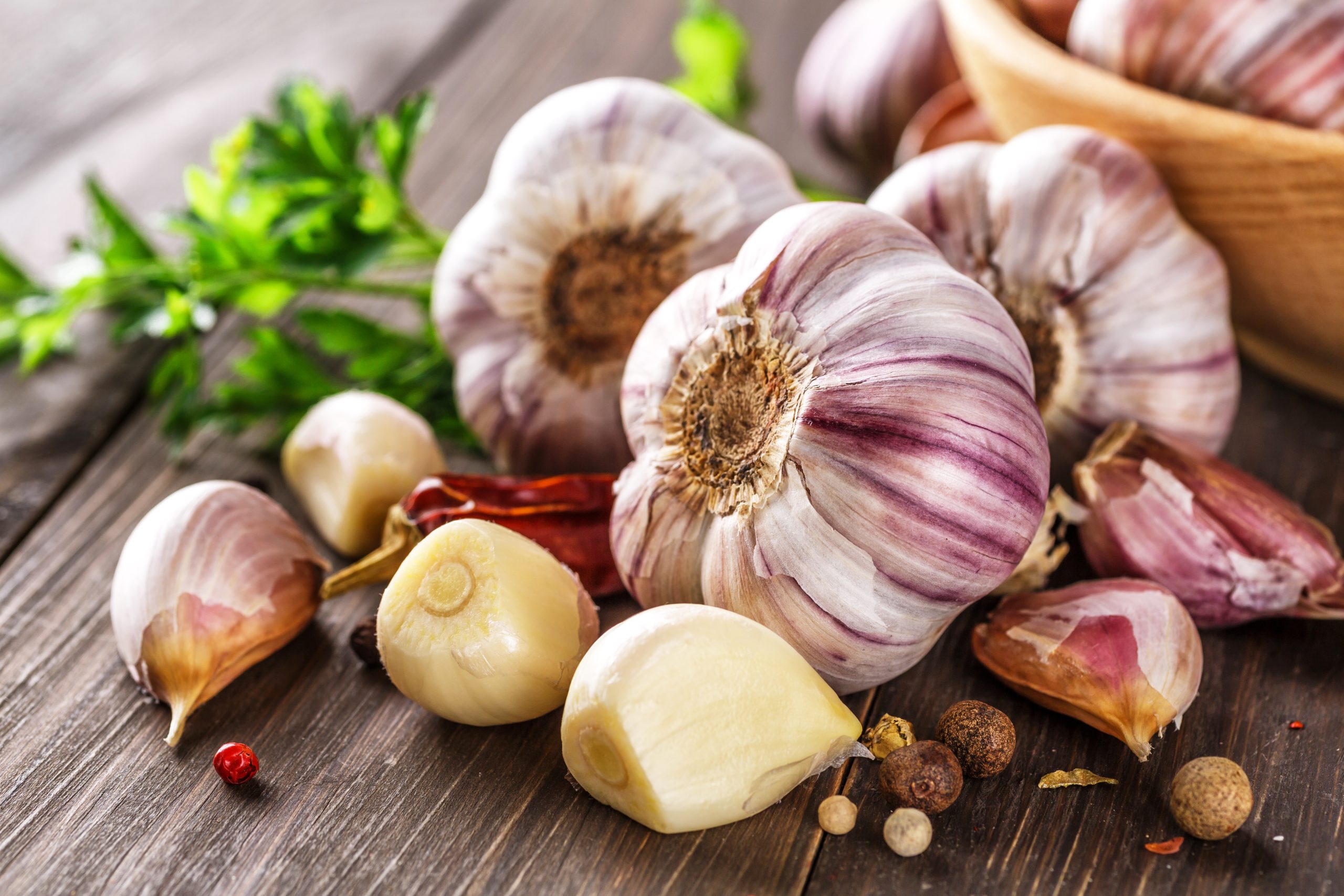
9. **Garlic and Onions**
Garlic and onions, indispensable staples in countless cuisines, often contribute rich flavors and aromas to our meals. Yet, when preparing for or embarking on air travel, these popular ingredients merit a second thought. Their potent compounds and specific fiber types can lead to both personal digestive distress and an unwelcome sensory experience for fellow passengers, transforming a common meal into a mid-flight regret.
Both garlic and onions are high in fructans, a fiber many struggle to digest, often unknowingly. This intolerance can lead to significant bloating, stomach discomfort, and excessive gas, symptoms amplified by reduced cabin pressure as the body attempts to break down fructans.
Beyond digestive issues, garlic and onions create a potent odor from sulfur compounds activated upon chewing. This results in strong breath, lasting up to 24 hours. While remedies like raw apple can help, a food science professor notes avoiding them before a flight is more effective.
Therefore, to maintain personal comfort and show consideration for your seatmates in the confined cabin environment, it’s advisable to steer clear of garlic- and onion-heavy dishes. Opting for milder, less aromatic alternatives ensures that you and those around you can breathe a little easier, literally, throughout the journey.
Read more about: 14 Childhood Comfort Foods That Still Hit Different: A Deep Dive into Nostalgic Flavors

10. **Added Sugars/Simple Carbohydrates**
While tempting, nutrition professionals strongly advise against snacks high in simple carbohydrates or added sugars without balancing macronutrients during flights. This choice can cause a physiological rollercoaster, leading to an energy crash that amplifies travel fatigue.
Marra Burroughs, a doctor of clinical nutrition, advises avoiding snacks high in simple carbohydrates or added sugars without balancing macronutrients. A rapid sugar influx causes quick blood glucose spikes and drops, leaving travelers sluggish and drained, undermining any momentary pleasure.
Travel itself is exhausting, involving early mornings and disrupted sleep. A poorly balanced, carb-heavy snack exacerbates fatigue and malaise, making recovery harder and prolonging adjustment upon arrival, rather than leaving you refreshed.
If a sweet craving is irresistible, Burroughs recommends pairing it with fat and protein to mitigate blood sugar fluctuations. A small fruit with unsalted nuts, or a protein bar, are strategic choices. Prioritizing balanced, nutrient-dense options ensures steady energy, helping you arrive more energized.

11. **Pears and Apples**
Apples and pears are universally recognized as healthy snacks, cherished for their vitamin content and, crucially, their fiber. Yet, much like their cruciferous counterparts, these seemingly innocuous fruits can become unexpected sources of abdominal discomfort when consumed before or during air travel. The key lies in their specific sugar composition, which can trigger bloating and stomach pain for a significant number of people.
These popular fruits are high in fructose, a natural sugar. Many individuals have a mild, often unrecognized, intolerance, or ‘fructose malabsorption.’ Their bodies struggle to digest the sugar, leading to fermentation by gut bacteria, causing gas and uncomfortable bloating.
Fructose intolerance is magnified in the cabin. As pressure shifts, existing digestive gases expand, making additional gas from poorly digested foods more noticeable and painful. Even if you tolerate these fruits on the ground, combined fructose sensitivity and altitude changes can create mid-flight misery.
Rather than risking an upset stomach or bloating, especially on a long flight, it’s prudent to consider alternative hydrating and gut-friendly fruit options. Fruits with lower fructose content or higher water content, such as berries or cucumber slices, might be a more suitable choice for in-flight snacking. Making informed decisions about your fruit intake can contribute significantly to a more comfortable and pain-free travel experience.
Read more about: Don’t Get Fooled: 13 Supermarket ‘Deals’ You Might Want to Skip for Better Quality & Savings
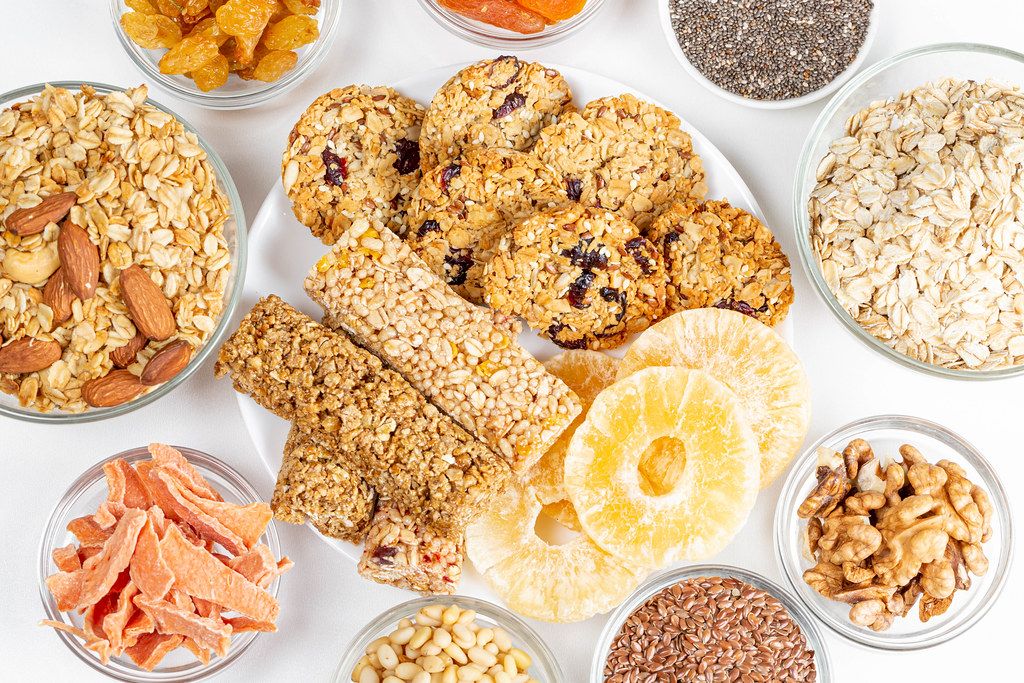
12. **Dried Fruit**
For many travelers, a bag of dried apricots or mixed fruit from an airport convenience store appears to be a sensible, healthy snack alternative. It’s portable, seemingly natural, and offers a quick energy boost. However, for certain individuals, particularly those with respiratory sensitivities, dried fruit can pose an unexpected and potentially serious in-flight risk, making it another item pilots and health experts recommend reconsidering.
Dried fruit’s concern revolves around sulfites, preservatives used for color and spoilage. Sulfites can trigger asthma attacks in susceptible individuals, as per a 2012 journal article. This is critical in the reduced oxygen environment of an airplane cabin.
The Aerospace Medical Association highlights that lower oxygen levels can significantly worsen breathing issues for those with respiratory ailments. A sulfite-induced asthma attack, combined with the already compromised oxygen saturation within the cabin, could lead to a severe and frightening medical event at 35,000 feet, far from immediate medical assistance.
Therefore, if you or a fellow traveler has a history of asthma or sulfite sensitivity, it’s a wise precaution to avoid dried fruits. Instead, opt for fresh fruit options that do not contain these preservatives or select other low-risk, easily digestible snacks. Being aware of these hidden triggers is a crucial step in ensuring a safer and more comfortable journey for everyone on board.
Read more about: The Lost Arts of the Pit: 18 Traditional Barbecue Techniques Every Home Cook Should Master
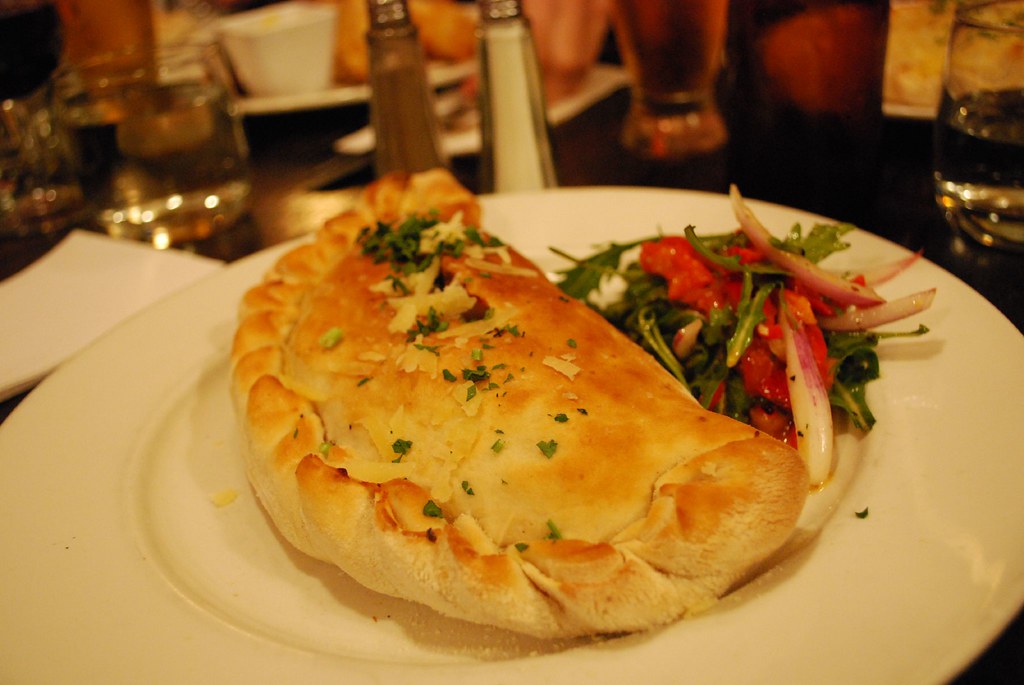
13. **Salami**
For those who favor savory, robust flavors, a salami sandwich might seem like a tempting choice for a pre-flight meal or an in-flight snack. It’s convenient, satisfying, and readily available in many airport eateries. However, as an ‘insider’ tip reveals, this cured meat could ironically trigger an uncomfortable, flight-compromising reaction for individuals sensitive to certain dietary compounds, landing it on the list of foods to approach with caution.
Salami is a high-histamine food, noted in an American Journal of Clinical Nutrition article. For those with histamine intolerance, consuming it can provoke symptoms like headaches, skin rashes, and significantly for air travel, aggravate nasal allergies or sinusitis.
Imagine severe nasal congestion or sinusitis, worsened by pressure changes during flight, while confined to an airplane seat. The combination of pre-existing sensitivity and salami’s high-histamine content can transform a routine flight into a struggle for comfortable breathing and well-being.
Therefore, next time you’re considering your airport meal options, perhaps pass on the salami in favor of alternatives. A turkey sandwich, for instance, typically has a lower histamine content and can provide a safer, equally satisfying protein-rich meal without the potential for aggravating allergic reactions or congestion. Making this small dietary switch can contribute significantly to a more comfortable and sniffle-free journey.
Read more about: The Lost Arts of the Pit: 18 Traditional Barbecue Techniques Every Home Cook Should Master
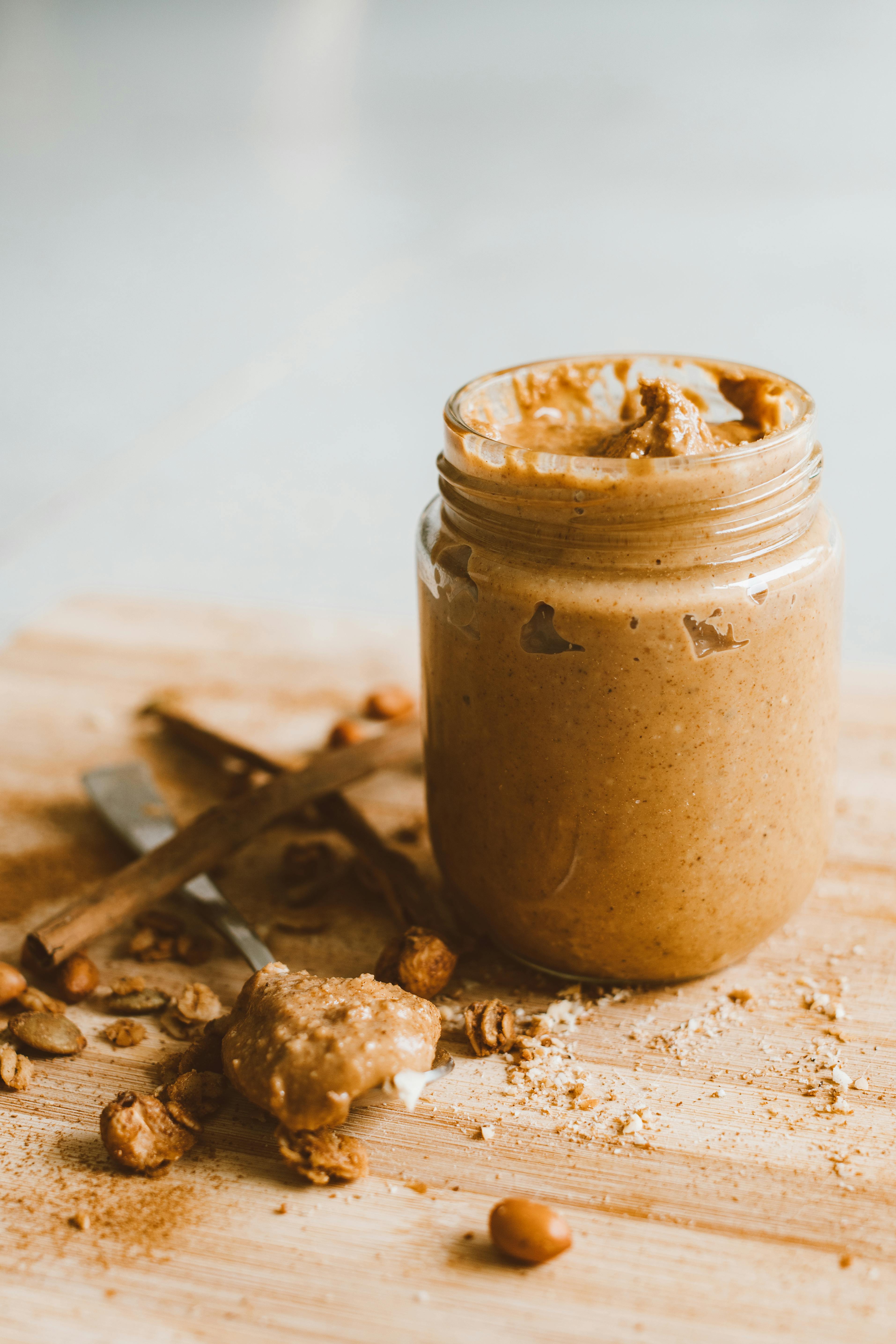
14. **Nuts and Nut Butter**
Nuts and nut butter are popular, protein-packed, and convenient travel snacks. However, they pose significant risks due to severe nut allergies among passengers. Consuming nuts in a shared, recirculated cabin has wider implications pilots and flight crews are acutely aware of.
Airplanes recycle cabin air, meaning airborne particles from nuts can circulate if a passenger opens a bag or consumes a nut butter product, risking exposure for allergic individuals. Severe allergic reactions, or anaphylaxis, demand immediate medical attention, challenging to provide at 35,000 feet.
Airlines have varying nut allergy policies, from ‘buffer zones’ to general announcements. For instance, Jet Blue tries to create a nut-free zone. Yet, despite measures, cross-contamination from residual particles or other passengers’ snacks remains a concern.
Opting for nut-free snacks like fresh fruit, cheese sticks, or pre-packaged crackers without nuts is a considerate and safer choice. This awareness protects vulnerable passengers and ensures a calmer environment for everyone. Individual dietary choices impact others’ safety and comfort.
Read more about: The Truth About Cooking Oils: Which Ones Fuel Inflammation and How to Make Healthier Swaps

15. **’Tap’ Water (in drinks and ice)**
Airplane water, especially for coffee, tea, or ice, carries a murky secret. While bottled water is safe, ‘tap’ water from onboard tanks raises significant health concerns, frequently advised against by frequent flyers and insiders.
Hope Barkoukis, a nutrition department chair, is direct: ‘Numerous sources have documented that water on planes comes from their tanks, and these are notoriously not going to get awards for being germ-free environments; so avoid water or ice from planes, including if it looks like they are using a pitcher.’ This highlights widespread concern.
Regulatory frameworks, like the 2009 Aircraft Drinking Water Rule, only mandate E. coli inspections every five years, leaving room for contamination. A 2015 study even found disease-causing bacteria in plane water. These findings show tank water quality is often subpar, potentially breeding pathogens.
To safeguard health and avoid gastrointestinal issues, steer clear of beverages made with airplane tap water, including coffee, tea, and ice. Request sealed, individual bottled water, or carry your own reusable bottle to fill *after* security. This simple precaution reduces illness risk and ensures a healthier journey.
Read more about: Craving Next-Level Fast Food? Unleash These 12 Secretly Modified Menu Items for an Epic Taste Experience!
As we’ve journeyed through this comprehensive list, it becomes abundantly clear that in-flight nutrition is far more than a matter of personal preference; it’s a strategic decision profoundly impacting well-being, comfort, and even safety for yourself and those sharing the cabin. From mitigating dehydration and preventing digestive distress to respecting sensitivities, the foods and drinks pilots and health experts advise avoiding are rooted in solid physiological and practical reasoning. By adopting these insider insights, travelers can transform their airborne experience, arriving at their destinations not just rested, but truly rejuvenated, ready to embrace whatever awaits them on the ground.



